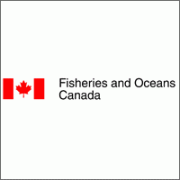Guidance on the Use of Targeted Environmental DNA (eDNA) Analysis for the Management of Aquatic Invasive Species and Species at Risk
Guidance on the Use of Targeted Environmental DNA (eDNA) Analysis for the Management of Aquatic Invasive Species and Species at Risk
By Cathryn Abbott, Mark Coulson, Nellie Gagné, Anaïs Lacoursière‐Roussel, Geneviève J. Parent, Robert Bajno, Charise Dietrich and Shannan May-McNally.
Analysis of DNA from environmental samples (i.e., environmental DNA or eDNA) is increasingly being used as a non-intrusive, sensitive, and often cost-effective biological monitoring approach, either on its own or to complement other methods. Due to the numerous promising applications of eDNA, there has been significant recent growth in eDNA research and development; however, the complexity and rapid evolution of related methodologies has created challenges for resource managers when deciding how to apply eDNA technologies to inform decision making.
This document was prepared in response to a request from Fisheries and Oceans Canada’s Aquatic Invasive Species (AIS) and Species at Risk (SAR) Programs for science advice on eDNA to support decision making on aquatic species and ecosystems. The need for this science advice document also was identified by the National Aquatic Invasive Species Committee (NAISC).
This document contains two main components to support AIS and SAR managers: 1) guidance on eDNA that includes definitions and considerations related to eDNA sampling, detection, and analysis for AIS and SAR managers; and 2) a reporting template that identifies reporting requirements for eDNA service providers delivering results to AIS and SAR managers. This document focuses on targeted eDNA approaches that selectively detect the DNA of a single species or taxon, often using quantitative polymerase chain reaction (qPCR).
This research document supports the science advice, which is the Department’s first step towards providing national guidance on eDNA by promoting more consistent reporting and communication between eDNA service providers and AIS and SAR managers. We recommend that AIS and SAR managers use the science advisory report, guidance, and reporting template as part of their communication plan for eDNA projects both before a project commences and while interpreting results. Consistent reporting of eDNA results is intended to improve AIS and SAR managers’ confidence in the use of eDNA to support the implementation of federal, provincial, or territorial legislation (e.g., AIS Regulations, Species at Risk Act).
Download Canadian Science Advisory Secretariat (CSAS) Research Document 2021/019 and eDNA Reporting Template in PDF format.



